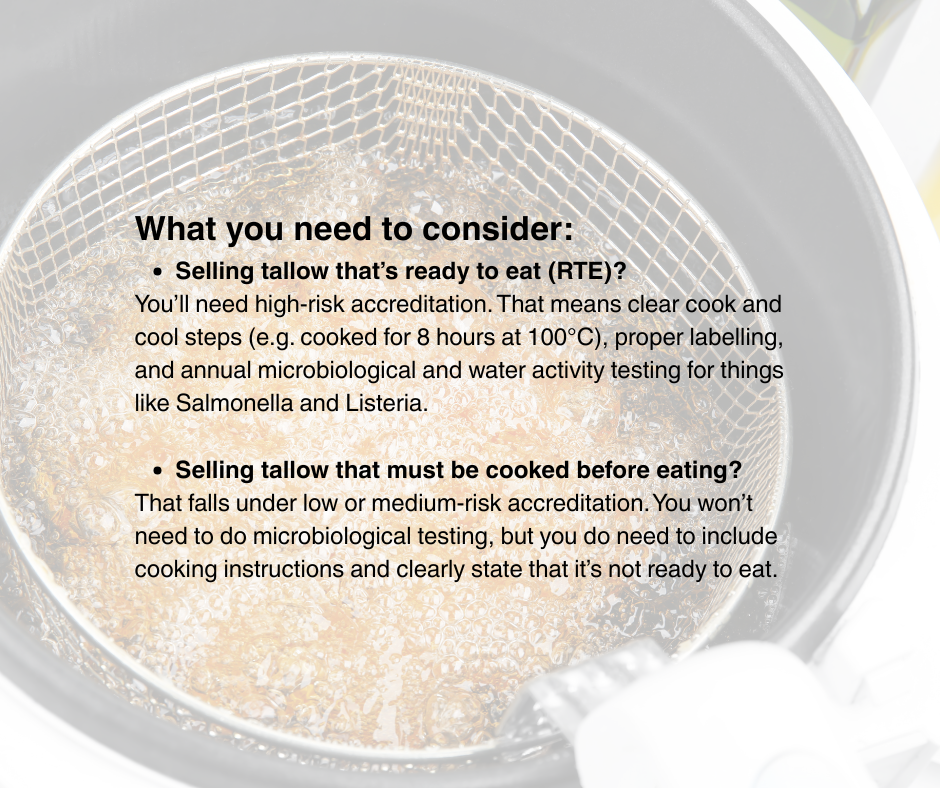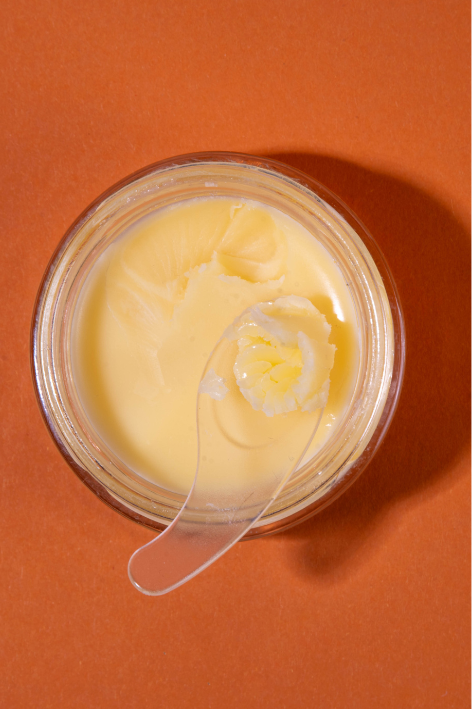Tallow is having a moment — from beauty products to cooking fat— but if you’re producing or selling tallow for human consumption, it’s essential to follow the right food safety requirements.
We’re focusing on tallow intended for kitchen use — that is, tallow that’s used as an ingredient in cooking or sold as a food product. Think: rendered beef fat sold in a jar for consumers to roast vegetables in or use as a cooking fat alternative.
If you’re rendering animal fats that are entirely suitable for human consumption—meaning no inedible or condemned materials—you must still comply with specific regulations around processing, labelling, and accreditation when producing tallow for food use, even if you’re a small butcher or not a traditional rendering facility.

Always ensure your raw materials are suitable for human consumption, are stored under the correct temperature controls and that you follow the correct cooking and cooling protocols. For example, if you’re collecting fat during boning and trimming, make sure it doesn’t sit under the bench for extended periods – it should be kept under temperature control just like other meat cuts, and must not include any unacceptable waste products. Keep detailed records, and have your process reviewed and approved by Safe Food before you start producing and supplying tallow.
Check your accreditation
If you’re a butcher, farmgate operator, or small producer tapping into the growing interest in traditional cooking fats, now’s the time to ensure your food safety program is up to date and approved by Safe Food – and your accreditation covers the products you’re offering.
Got questions or need a hand updating your food safety program? We’re happy to help — just get in touch:
📞 1800 300 815 (freecall within Queensland)
🌏 +61 (07) 3253 9800 (outside Queensland)
✉️ applications@safefood.qld.gov.au

